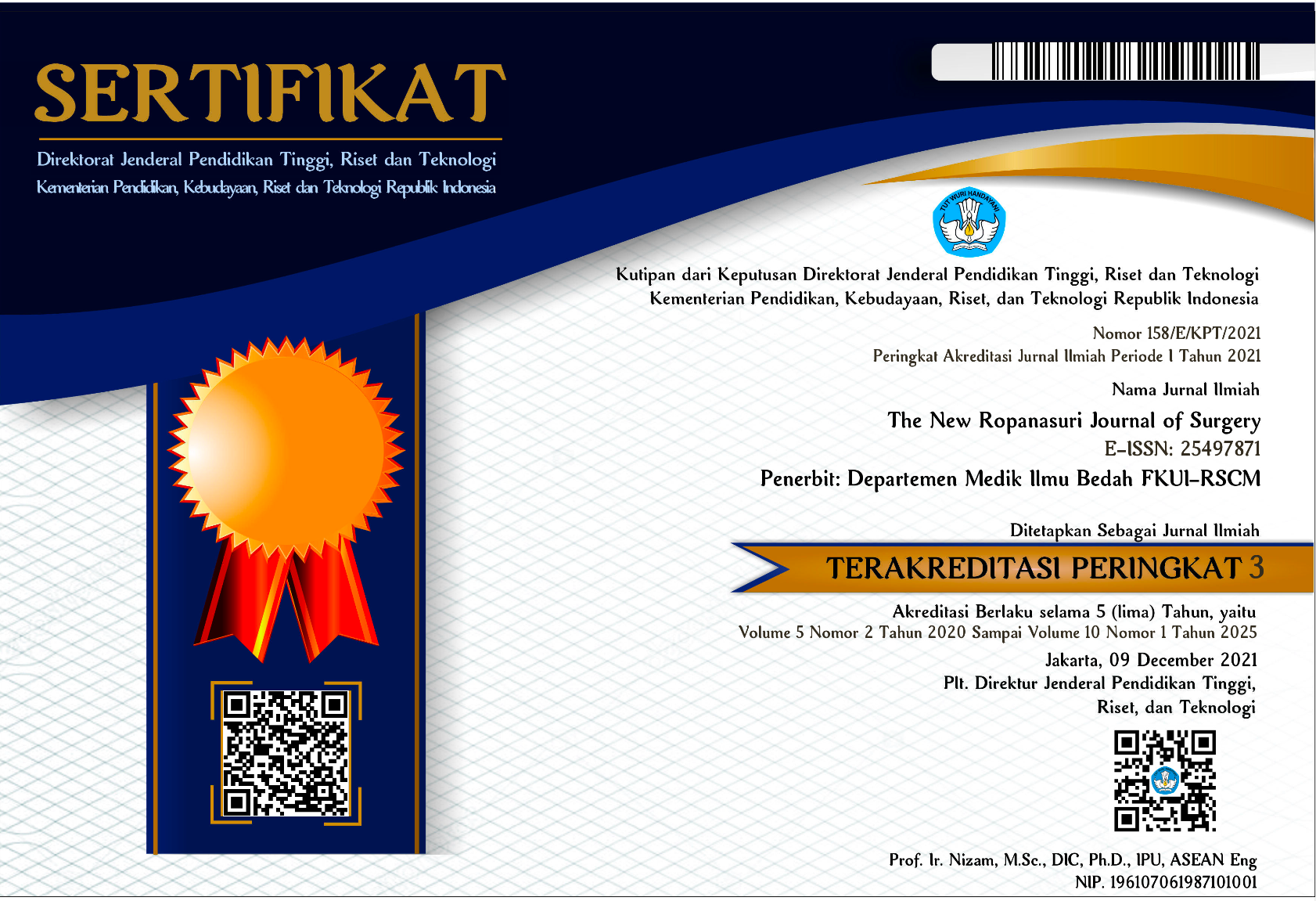Abstract
Introduction. Untreated ureteropelvic junction obstruction would lead to infection and many other complications. The gold standard to treat this condition is pyeloplasty. Nowadays, laparoscopic pyeloplasty has emerged as a potential modality better than open pyeloplasty.
Method. Data retrospectively obtained from the medical records of UPJO patients at Persahabatan Hospital, Jakarta. The patient’s age, gender, weight, and BMI noted. Duration of operation, intraoperative blood loss, and complications recorded as the intraoperative status. Length of hospital stay, pain score on the first post-operative day, time to do the daily activity, and return to work recorded as post-operative variables of this study.
Results. We included our ten patients who underwent laparoscopic pyeloplasty in our center. The mean of patient’s age is 40.3 ± 17.1 years with 70% male patients. The average body weight and body mass indexes are 62.7 ± 17.8 kg and 24.2 ± 3.9 kg/m2, respectively. Most of the procedures have been done in 225 minutes. Intraoperative blood loss is around 50 mL, with one patient loss his blood around 500 mL. Describing the post-operative outcomes, the average length of stay of the patients is 8.6 ± 1.6 days, with an average visual analog score of 3.5 ± 1.1 on the first post-operative day. The average time needed to recover to daily activity is around 7.3 ± 1.8 days.
Conclusion. This study describes our initial experience on laparoscopic pyeloplasty in RSUP Persahabatan Jakarta. The data showed comparable results with other reviews. We need to bring further improvement to our findings along with our experience.
Recommended Citation
Siregar, Moammar AR and Mirza, Hendy
(2019)
"Initial Experience on Laparoscopic Pyeloplasty in Persahabatan General Hospital, Jakarta: A Case Series,"
The New Ropanasuri Journal of Surgery: Vol. 4:
No.
2, Article 8.
DOI: 10.7454/nrjs.v4i2.1050
Available at:
https://scholarhub.ui.ac.id/nrjs/vol4/iss2/8













